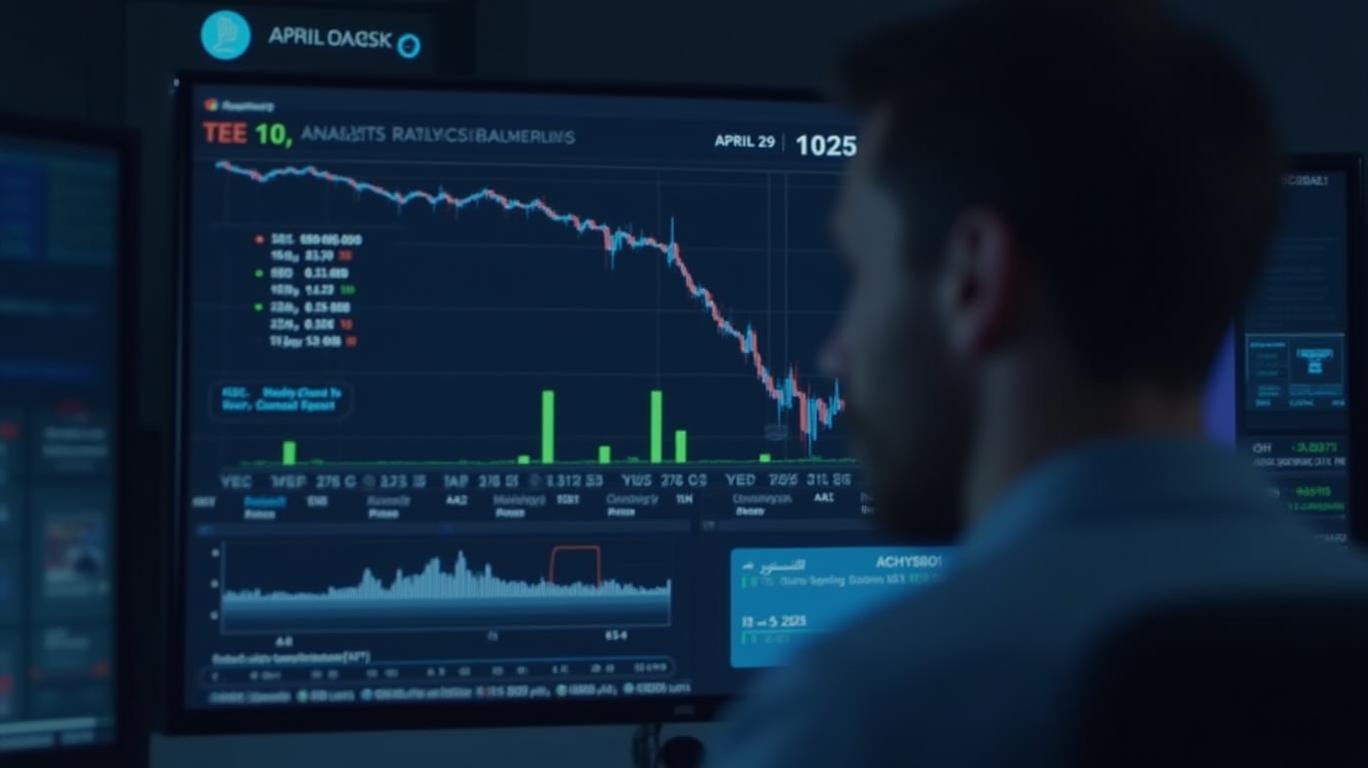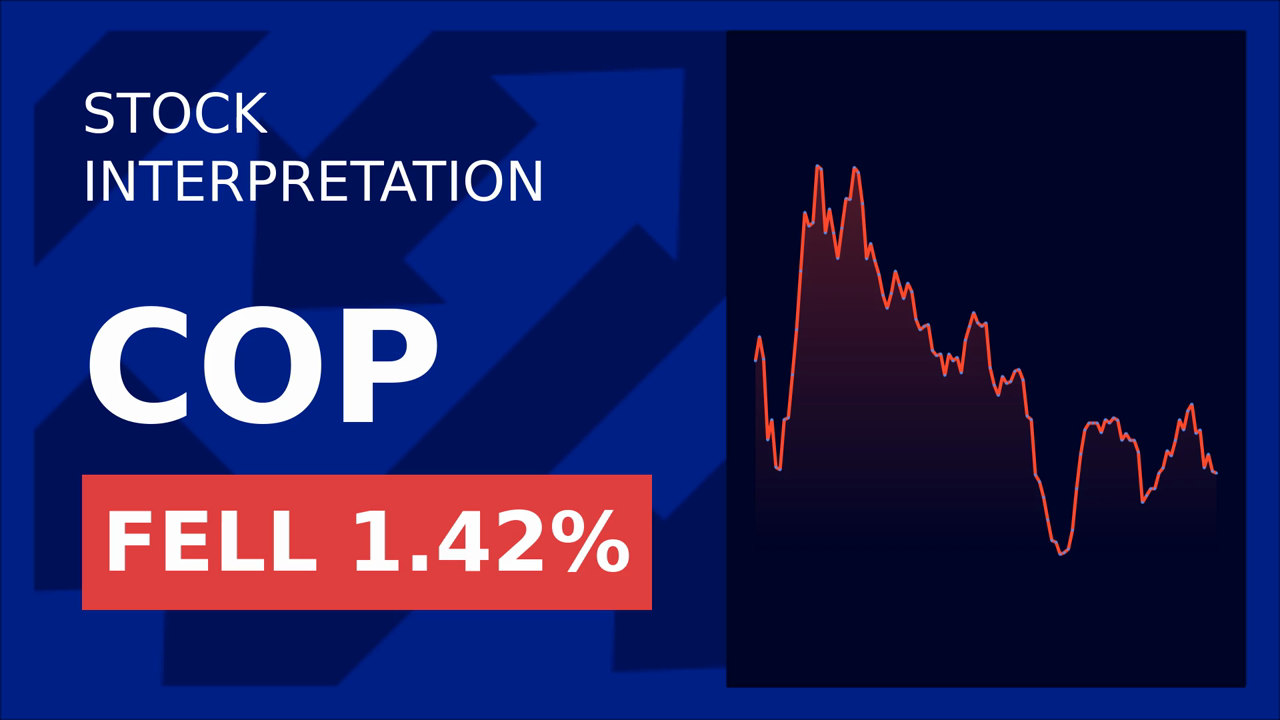Why ConocoPhillips Stock Got Socked on Tuesday: A Deep Dive into the Decline
On April 29, 2025, ConocoPhillips (COP) shares fell over 1%, closing at $91.88, even as the broader S&P 500 rose 0.6%. The decline was not an isolated event but part of a months-long downward trajectory driven by a mix of strategic, financial, and macroeconomic challenges. Let’s dissect the key factors behind this slump.
1. Analyst Downgrade Sparks Immediate Selling Pressure
The immediate catalyst was a downgrade by Bank of America Securities analyst Kalei Akamine, who shifted his recommendation from Buy to Neutral and slashed his price target from $138 to $107 per share. This move directly contributed to the stock’s underperformance on April 29. Akamine cited a softening macroeconomy and OPEC’s lack of cohesion as risks to oil prices, urging investors to prioritize “defensive plays” in the energy sector.

The downgrade came amid a broader sector reassessment. While some analysts, like Mizuho’s $142 price target, remained bullish, Akamine’s skepticism underscored growing investor caution.
2. Trade War Fears and Macroeconomic Uncertainty
The stock’s struggles were exacerbated by geopolitical tensions, particularly the ongoing U.S.-China trade war. Analysts noted that tariff-related uncertainty had deterred investors from cyclical sectors like energy, where companies like ConocoPhillips are highly sensitive to global demand.
The OPEC+ coalition’s fractured stance on production cuts also weighed on oil prices. With members like Russia and Saudi Arabia at odds over output policies, the stability of crude prices—a critical factor for COP’s revenue—remained in doubt.
3. Weak Financial Performance and Strategic Shifts
ConocoPhillips’ Q4 2024 results revealed a 3.7% drop in revenue to $14.7 billion and a 16% decline in net income to $2.4 billion, driven by falling oil prices. These figures placed COP 15th on a list of big-cap stocks plunging in 2025, with its stock down 7.86% year-to-date by early April.
The company’s decision to consider selling $2 billion in Oklahoma oil and gas assets—acquired in its 2024 Marathon Oil takeover—further spooked investors. While framed as a portfolio streamlining effort, the move was interpreted as a sign of financial strain. The announcement on April 3 triggered a 10.23% single-day drop in COP’s stock, despite a surge in trading volume.
4. Governance Concerns and Shareholder Activism
Internal governance disputes added to investor unease. Shareholder activists, led by the National Legal and Policy Center, pushed to remove COP’s emissions reduction targets, arguing they were economically burdensome. The company urged shareholders to vote against these proposals, while also announcing reforms to eliminate supermajority voting provisions.
These governance shifts, occurring amid a 5% monthly stock decline, signaled strategic uncertainty. Investors often penalize companies navigating activist campaigns, fearing distractions from core operations.
5. Valuation and Market Sentiment
Despite a consensus price target of $133.47 (implying a 47.28% upside), COP’s trailing metrics told a cautionary tale. Its Forward P/E of 13.07 lagged the sector average of 14.12, and its PEG ratio of 2.2—vs. the industry’s 1.72—raised concerns about overvaluation relative to growth prospects.
The Zacks Rank of #3 (Hold) further reflected skepticism, with downward revisions to EPS estimates (a 10.91% drop over the past month) highlighting near-term risks.
Conclusion: A Stock at a Crossroads
ConocoPhillips’ April 29 decline was the culmination of interconnected challenges: analyst skepticism, macroeconomic headwinds, weak financials, and strategic uncertainty. While the company maintains long-term strengths—such as its Willow Project in Alaska and a $10 billion shareholder return plan—the near-term outlook remains clouded.
Investors will watch two critical developments:
1. Q1 2025 earnings, due May 8, which are projected to show a 0.99% EPS decline despite a 11.45% revenue rise.
2. Oil price stability, which hinges on OPEC cohesion and the resolution of trade tensions.
If COP can navigate these hurdles, its consensus upside potential of 47% suggests a rebound is possible. However, until macro risks subside and governance concerns are resolved, the stock is likely to remain volatile.
In sum, ConocoPhillips’ decline on April 29 was not just a blip but a symptom of deeper structural and external pressures. For now, investors are holding their breath—waiting to see if the company can regain its footing in turbulent waters.










